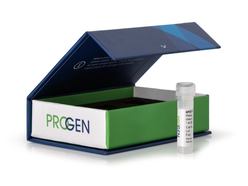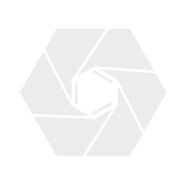Technical Data Sheet
ROTI®Blot 1
Storage temp. +15 to +25 °C
Transport temp. ambient temp.
WGK 1
Discontinuous transfer buffer for semi dry blotting.
€131.70/Pack Qty.
excl. VAT. | 1 kit per Pack Qty.
Art. No. L509.1
Fits to / Accessories
Product details
Discontinuous buffer system for optimum transfer in the semi-dry blotter.
- Optimised for semi dry blotting
- Superior blotting results for peptides and proteins of every size
- Special formulation with reduced acid formation - for optimal electrode protection
In the semi-dry blotting system, both a continuous buffer system (identical buffer at anode and cathode) and a discontinuous buffer system (different buffer at anode and cathode) can be used. The transfer performance of discontinuous systems is, however, generally higher, since the two buffers are designed separately according to the needs of the two electrodes.
The discontinuous buffer system ROTI®Blot 1 consists of two different buffers, the anode buffer A (pH 7.8 ±0.1) and the cathode buffer K (pH 8.5 ±0.1). ROTI®Blot 1 shows a much better transfer efficiency than a tris-glycine buffer and can be used for proteins and peptides of any length.
The blot stack is built up by soaking the upper blotting papers with cathode buffer and the lower blotting papers with anode buffer. With slightly longer transfer times, proteins >100 kDa can also be completely transferred with ROTI®Blot 1.
A detailed instruction manual is enclosed with the product.
ROTI®Blot 1 10x conc., for electrophoresis
Anode buffer ROTI®Blot A, 1 l (10 x concentration) (Art. No. L510)
Cathode buffer ROTI®Blot K, 1 l (10 x concentration) (Art. No. L511)
Both solutions may be bought separately.
- Subtotal: 0.00
| Art. No. | Pack Qty. | Pack. | Packaging | Price | Quantity | |
|---|---|---|---|---|---|---|
| L509.1 | 1 kit | glass | 2 x 1 L |
€131.70 |
|
|
|
In stock
Available
In procurement
No longer available
Delivery date currently unknown
|
||||||
- Subtotal: 0.00
Downloads / MSDS
General information
Buffers recommended for Tank blotting:
Acc. to Tobwin et al., 1997: 25 mM Tris, 192 mM glycin, 20 % methanol. Optional: 0-0,1 % SDS.
Acc. to Bjerrum und Schaefer-Nielsen, 1986: 48 mM Tris, 39 mM glycin, 0-20 % methanol. Optional: 0-0.1 % SDS.
Acc. to Dunn, 1986: 10 mM NaHCO3, 3 mM NaCO3, 20 % methanol.
Buffers recommended for Semy Dry blotting:
Discontinuous buffer system: ROTI®Blot 1 - for standard proteins or ROTI®Blot 2 - for hydrophobic proteins.
Continuous Tris-glycin buffer acc. to Bjerrum and Schaefer-Nielsen, 1986: 48 mM Tris, 39 mM glycin, 0-20 % methanol. Optional: 0,01-0,1 % (usually 0,0375 %) SDS.
Continuous CAPS buffer for blotting of basic proteins and prior to N-terminal sequencing: 0,22 % CAPS (pH 10,5-11,0), 10 % methanol.
Do not adjust pH of the buffer (exception: CAPS stock solution). Adding acid or base to the buffer will result in higher conductivity, leading to increased formation of heat as well as ions. Subsequently, this results in brown, “burnt” looking blotting paper and damage to the electrode plates.
Methanol prevents the gel from swelling during transfer (mandatory for gradient gels!) and improves the absorption of proteins to NC membranes. For transfer of native or big proteins, reduce or omit methanol.
SDS improves transfer efficiency of large proteins and protein binding to PVDF membranes, however increasing relative current, power and temperature. Don’t use SDS for Semi-Dry blotting of small proteins to NC membranes. For tank blotting use 0,02 % SDS in minimum.
For blotting of native proteins use buffer acc to Bjerrum and Schaefer-Nielsen with 0,04 % SDS and 0-10 % methanol.

